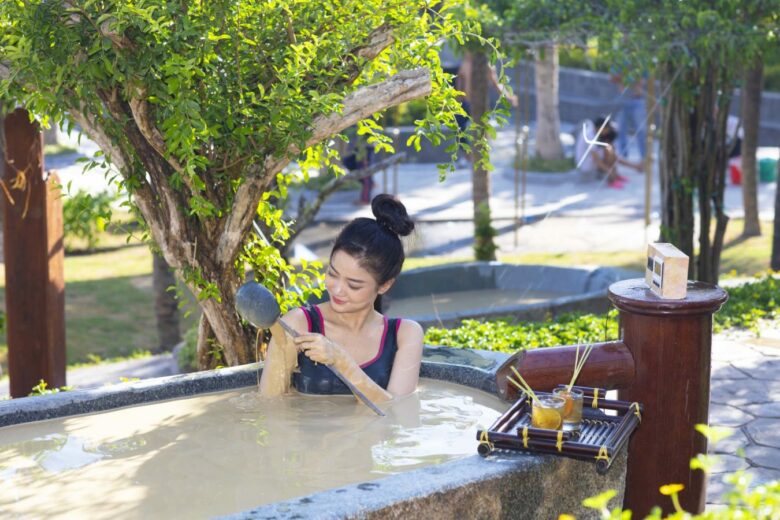Timeless Beauty: Must-See Cultural Heritage Sites in Nha Trang
Nha Trang, a stunning coastal city on Vietnam’s South Central Coast, is often celebrated for its turquoise waters, luxurious resorts, and vibrant culinary scene. But beneath the sunny exterior and beachside buzz lies a city steeped in history, culture, and heritage. For travelers who yearn to understand the soul of a destination, exploring Nha Trang’s cultural heritage sites offers a deeper connection to its storied past and diverse traditions.
From ancient Cham temples and French colonial architecture to centuries-old pagodas and local craft villages, the cultural landmarks of Nha Trang reflect the city’s layered identity—shaped by indigenous spirituality, royal legacy, and the influence of empires past.
Whether you’re a history buff, a curious wanderer, or a soul-searching traveler, here are the must-see cultural heritage sites in Nha Trang that reveal the timeless beauty of this remarkable city.
1. Po Nagar Cham Towers – A Spiritual Legacy
One cannot talk about cultural heritage in Nha Trang without beginning with the iconic Po Nagar Cham Towers. Perched on the hill of Cu Lao Mountain, overlooking the Cai River, these ancient brick towers were constructed between the 7th and 12th centuries by the Cham civilization, an Indianized kingdom that once ruled much of central and southern Vietnam.
Dedicated to the goddess Po Ina Nagar, the site remains a sacred place of worship for both the Cham and Vietnamese people. The main tower, which rises nearly 28 meters high, is a marvel of ancient engineering and religious architecture. Elaborate carvings, lingam-yoni altars, and detailed depictions of Hindu deities reflect the spiritual significance of this site.
A visit here offers more than historical insight—it’s a living cultural experience. Pilgrims, traditional music, and fragrant incense fill the site, particularly during the annual Po Nagar Festival (April), making it a deeply moving stop for any traveler.
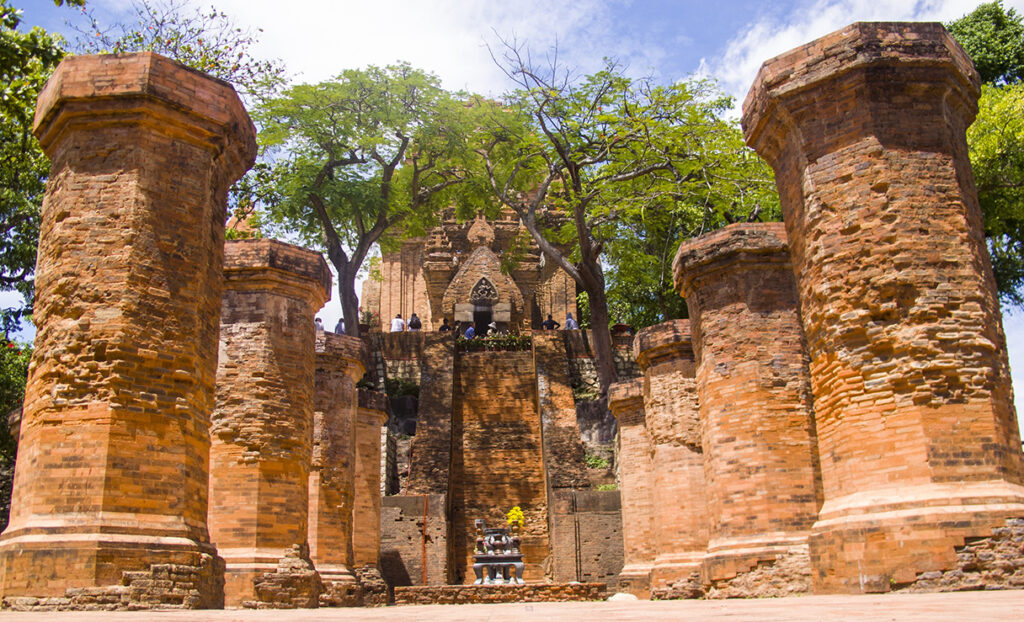
2. Long Son Pagoda – A Testament to Resilience and Faith
Just a short distance from the city center stands Long Son Pagoda, a prominent Buddhist temple that combines spiritual tranquility with architectural beauty. Originally built in the late 19th century and rebuilt multiple times due to natural disasters and wars, the temple is a symbol of the city’s resilience.
The most famous feature of Long Son Pagoda is the enormous white Buddha statue seated on the hilltop behind the temple. Measuring 24 meters in height and visible from across the city, this serene figure of Gautama Buddha represents peace and enlightenment. The base of the statue includes images of monks who died protesting against oppression, adding depth and poignancy to the experience.
For visitors, Long Son Pagoda offers not only panoramic views of Nha Trang but also a chance to witness local Buddhist practices and marvel at mosaic dragon motifs, lotus flowers, and intricate carvings throughout the grounds.
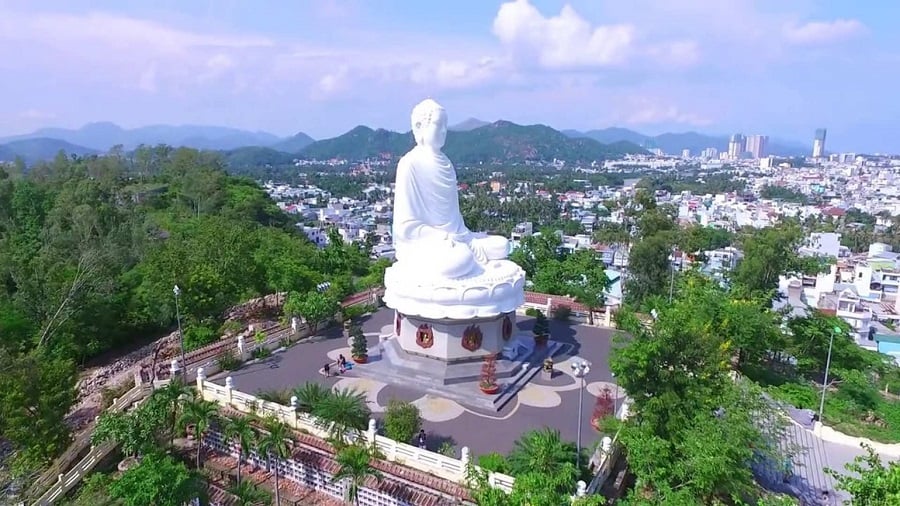
3. Nha Trang Cathedral – Gothic Grandeur in the Tropics
Nha Trang Cathedral, also known as Christ the King Cathedral, brings a slice of Europe to Vietnam’s tropical coastline. Constructed by the French in the 1930s, this Gothic-style church is built entirely of stone and stands atop a small hill near the train station, offering visitors a unique architectural contrast amid the city’s palm-lined streets.
The cathedral’s stained-glass windows, Latin inscriptions, and pointed arches transport you to a different era, reflecting the colonial influence that shaped much of Nha Trang’s urban identity. The church is still active today, hosting regular Mass services and welcoming both local worshipers and tourists alike.
Its peaceful ambiance and well-preserved structure make it a fascinating stop for photographers and history lovers looking to explore the city’s colonial past.
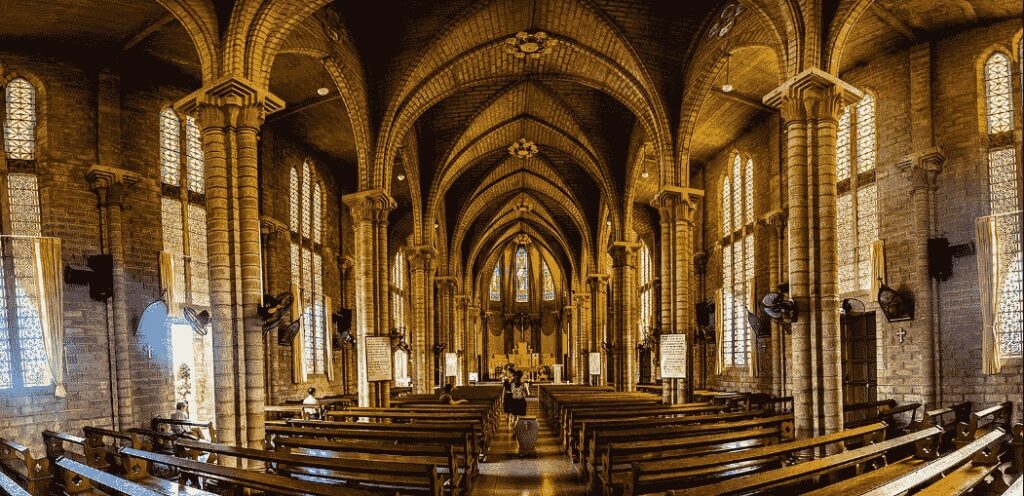
4. Hon Chong Promontory – Where Legend Meets Landscape
While often praised for its scenic coastal views, Hon Chong Promontory is also a cultural gem wrapped in folklore. Located just north of the city center, this cluster of giant granite rocks jutting into the sea has inspired countless legends over generations.
One popular story tells of a giant who accidentally left his handprint on one of the rocks while trying to catch a beautiful local girl. Today, the “giant’s handprint” remains visible—a magnet for curious travelers and local couples hoping for romantic blessings.
Beyond its mythical appeal, Hon Chong also offers a cultural house and regular performances of traditional music, including Cham dance and đàn đá (stone xylophone) shows. This fusion of nature and heritage makes Hon Chong a must-see site in Nha Trang for those seeking stories behind the scenery.
5. Alexandre Yersin Museum – A Life of Science and Service
Alexandre Yersin, a Swiss-French physician and bacteriologist, is one of the most revered foreigners in Vietnamese history, especially in Nha Trang. The Yersin Museum, located near the Institute of Oceanography, is dedicated to his contributions to science, medicine, and education in Vietnam.
Yersin arrived in Nha Trang in the late 19th century and made it his home. He is best known for co-discovering the bacterium responsible for the bubonic plague and founding the Pasteur Institute in Nha Trang. His passion for research, humanity, and Vietnam’s development earned him widespread admiration.
The museum offers an intimate look at his personal artifacts, scientific instruments, and manuscripts. It’s a quiet but powerful reminder of how one life can leave a lasting legacy in another land.
6. The Institute of Oceanography – Preserving Marine Heritage
Established in 1922, the Institute of Oceanography in Nha Trang is one of the oldest and most comprehensive research centers for marine biology in Southeast Asia. While technically a scientific institution, it doubles as a museum that educates visitors on the diverse marine ecosystem of Vietnam.
Its exhibits include thousands of specimens, preserved marine life, and a fascinating whale skeleton. A walk through the museum offers insights into the biodiversity of the South China Sea and highlights the importance of ocean conservation—a cultural heritage in its own right for a coastal city like Nha Trang.
The institute also showcases traditional fishing tools and boats, preserving knowledge about Vietnam’s maritime heritage that has supported generations of coastal communities.
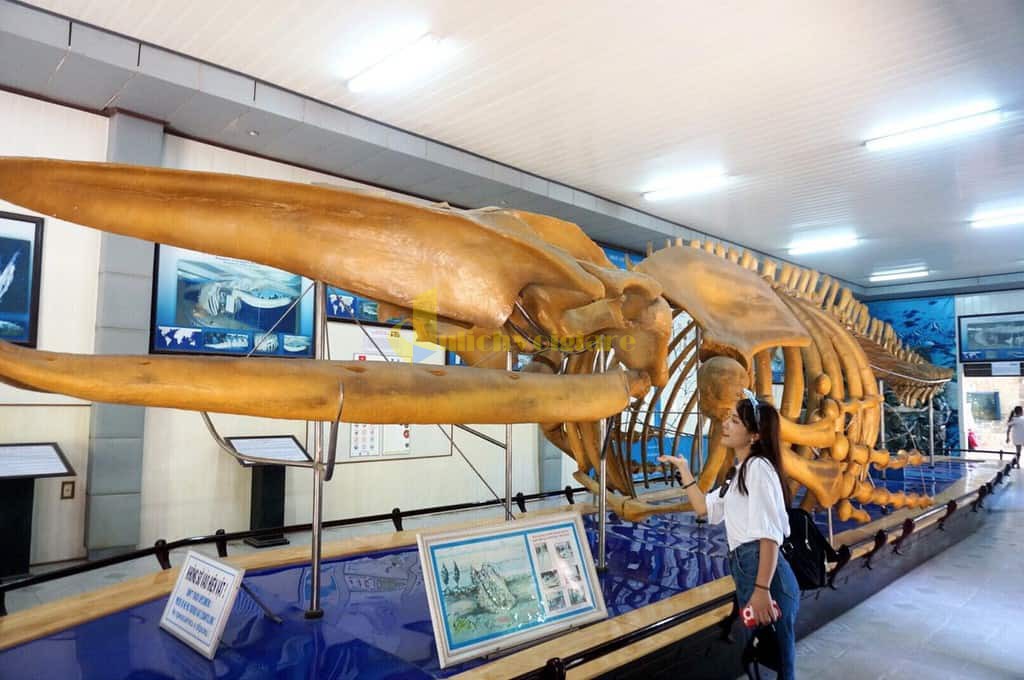
7. Bao Dai Villas – An Imperial Getaway
Tucked away on Cau Da Hill are the serene Bao Dai Villas, once the summer residence of Vietnam’s last emperor, Bao Dai. The collection of five colonial-style villas is nestled within lush gardens and offers sweeping views of the ocean.
While the interiors are modest compared to European palaces, the site’s charm lies in its history and scenery. Wandering through the villas and the surrounding grounds, visitors can imagine the quiet life of royalty in exile, far removed from the chaos of court politics.
The villas are a window into the 20th-century royal lifestyle and a rare example of Vietnamese aristocratic heritage preserved by the sea.
8. XQ Historical Village – Craftsmanship and Culture
For a more hands-on cultural experience, head to XQ Historical Village near the Po Nagar Towers. This creative village specializes in traditional Vietnamese embroidery, elevating the craft to fine art. Each artwork can take months to complete, and the village itself is a living museum of craftsmanship.
Visitors can watch artisans at work, explore themed rooms decorated with silk masterpieces, and even try their hand at embroidery. The space is beautifully designed with traditional architecture, koi ponds, and blooming flowers that reflect the harmony of Vietnamese aesthetics.
More than just a souvenir shop, XQ Historical Village preserves and promotes the heritage of Vietnamese textile arts—a unique cultural expression often overlooked.
9. Nha Trang Traditional Market – Everyday Heritage
Sometimes, the most authentic cultural experiences come from everyday life. A walk through Nha Trang’s traditional markets—like Dam Market or Xom Moi Market—reveals the heartbeat of the city.
From fresh seafood and tropical fruits to handcrafted goods and herbal medicines, these markets reflect the rhythm of local life. Vendors greet you with lively chatter, food stalls beckon with fragrant dishes, and generations of traditions are exchanged over every transaction.
Exploring the market isn’t just shopping—it’s storytelling. It’s where visitors see, smell, taste, and hear the essence of Nha Trang’s living culture.
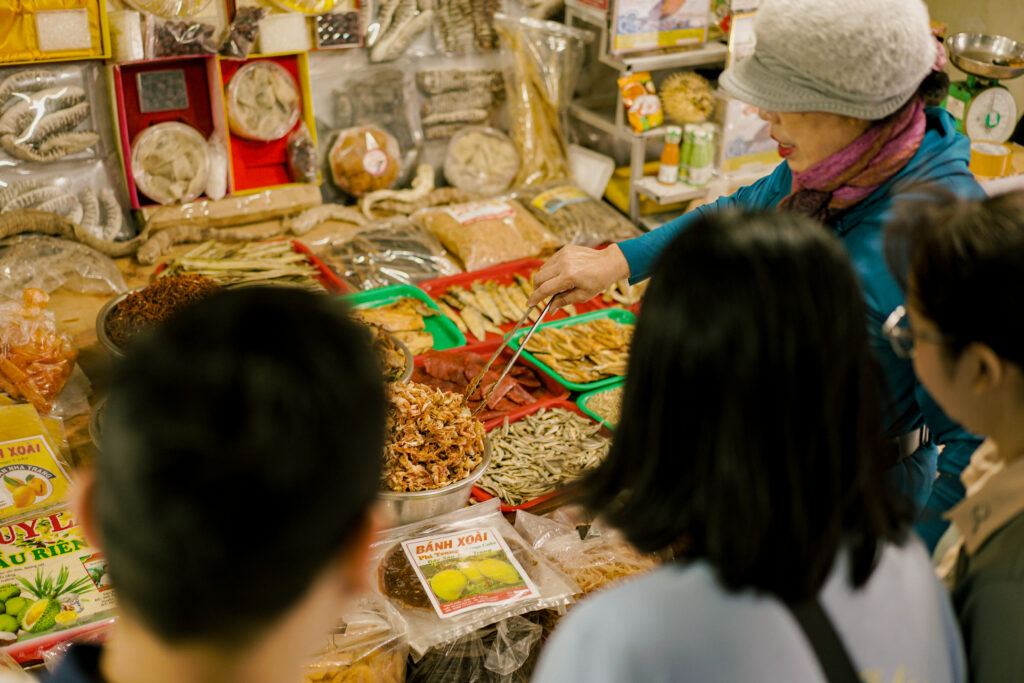
10. Traditional Festivals – A Celebration of Identity
To truly experience Nha Trang’s cultural heritage, time your visit with one of the city’s traditional festivals. These celebrations, often linked to religious or seasonal calendars, bring the community together and offer vibrant displays of dance, music, and ritual.
Highlights include:
-
Thap Ba Festival (at Po Nagar): A sacred ceremony honoring the Cham goddess, featuring processions, prayers, and performances.
-
Sea Festival (Festival Biển Nha Trang): A modern but culturally rich event celebrating maritime heritage with parades, folk games, and coastal cuisine.
-
Mid-Autumn Festival: While celebrated nationwide, Nha Trang’s version features lion dances along the beach and festive lights across the city.
Participating in or observing these events allows travelers to witness how Nha Trang’s identity is constantly expressed through joy, reverence, and creativity.
Traveler’s Tip: Cultural Exploration from Potique Hotel
Strategically located in the heart of Nha Trang city, Potique Hotel offers the perfect base for cultural travelers eager to explore the city’s heritage. Whether you’re planning a day trip to ancient temples or simply want to stroll through markets and colonial architecture, most of Nha Trang’s must-see cultural sites are just a short ride or walk away from Potique.
Here’s a quick look at how accessible these landmarks are from Potique Hotel:
-
Po Nagar Cham Towers – 2.5 km | ~7 minutes by car
-
Long Son Pagoda – 2 km | ~8 minutes by car
-
Nha Trang Cathedral – 1 km | ~5 minutes by car / 15-minute walk
-
Hon Chong Promontory – 4 km | ~12 minutes by car
-
Alexandre Yersin Museum – 2.7 km | ~9 minutes by car
-
Institute of Oceanography – 4.5 km | ~12 minutes by car
-
Bao Dai Villas – 6.8 km | ~16 minutes by car
-
XQ Historical Village – 2.5 km | ~8 minutes by car
-
Dam Market / Xom Moi Market – 1.7 km | ~5 minutes by car / 10-minute walk
Staying at Potique Hotel means you’re never far from the historical heart of Nha Trang. In fact, the hotel itself reflects cultural heritage through its Indochine-inspired design, oil paintings that portray daily life in old Nha Trang, and carefully curated interior details that blend tradition with contemporary luxury.
Whether you prefer guided tours or independent adventures, Potique’s concierge team is always ready to help you plan your cultural itinerary, provide directions, or even arrange transportation to the sites.
Conclusion: A City of Living Heritage—Right Outside Your Door
While Nha Trang dazzles visitors with sunshine and sea, its cultural heritage gives the city soul, depth, and timeless beauty. From ancient Cham towers to colonial cathedrals and lively markets, every corner holds a story.
And the best part? You don’t need to go far to uncover it all. When you stay at Potique Hotel, the heart of Nha Trang’s heritage is right outside your door. Within just a few kilometers, you’ll find spiritual landmarks, royal villas, traditional festivals, and artisan villages—each one connecting you to the city’s fascinating past and vibrant present.
Let Potique be your gateway to timeless beauty. Explore the cultural gems of Nha Trang with the convenience of a centrally located, award-winning hotel designed to inspire meaningful travel.


